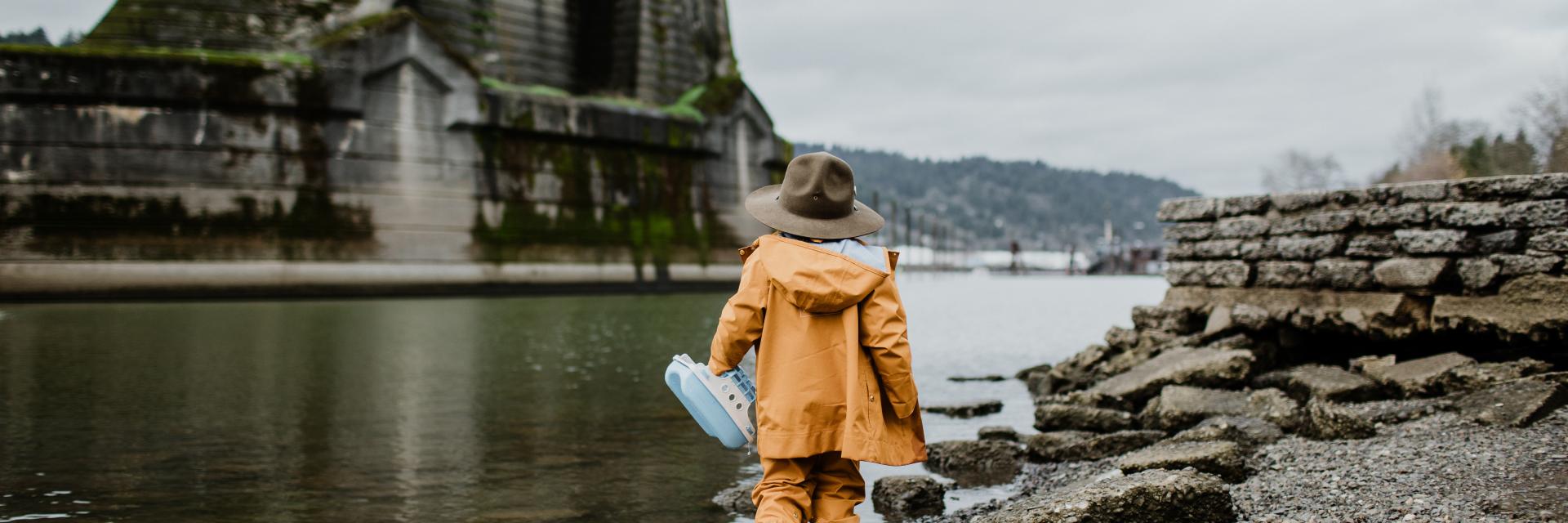Engineering a better raincoat: a Dalhousie Capstone project story
Tuesday, September 24, 2019
This is the story of what happens when you bring together engineering students and the fashion industry. While not a traditional pairing, it begins to make more sense when the fashion company in question is trying to create a sustainable brand in a highly unsustainable industry.
Faire Child, a children’s rainwear company, was started by owner and designer Tabitha Osler with a specific goal in mind: reduce the environmental impact of fashion. Osler has grown her company following key philosophies, one of which — waste is a resource — led her to Dalhousie University’s Faculty of Engineering Capstone Design Projects.
The Capstone Program matches student teams with partners from industry, providing real challenges for teams to solve. Typical projects are open-ended challenges that companies do not have the time or resources to tackle alone. Ideally, these are problems that are important to solve, but not critical to the core business operations of the industry partner.
In the case of Faire Child, there were two problems to solve — development of an adhesive patch kit and a tool for removing brass snaps.
Solution 1: Patch kit production
For the patch kit, the current approach to mending tears in Faire Child garments is for the customer to provide the torn item to the company, which is then repaired and returned to the customer. This takes the garment out of service for a period, and company employees are working on garment repair instead of garment production. This is an expensive and inefficient approach for both the company and the customer. There are also costs associated with delivery.
The Dalhousie engineering students accomplished patch manufacturing through the development of a punch press to create uniform patch shapes. The punch press is designed for compatibility with existing equipment and works with environmentally-certified adhesive, consistent with Faire Child company values. This completely changes the existing strategy for repairs, providing a more customer-centric and environment-friendly way of managing repairs.
Solution 2: Tool for removing brass snaps
Faire Child manufactures waterproof outerwear created from recycled materials. This is a closed-loop model, where no raw material is wasted but is recycled, endlessly. To maintain a 100% recyclable product, the brass snaps must be removed from the clothing before the fabric can be sent off for processing. This is done by separating out the snaps for brass recycling from the fabric, which then enters a recycling process. Faire Child did not have a standard snap removal procedure. After testing removal methods, the students designed and developed a punch press that met all regulations of local recycling facilities.
Osler started Faire Child because she wants children to engage with their outdoor environment. She wants to create waterproof garments that allow children to be outside in any weather, and she wants those garments to be made responsibly.
Thanks to innovative collaborations like the Capstone Program, Faire Child is doing just that — producing rainwear with less waste. Not only are Osler and many other companies able to affordably introduce new technologies into their process, but students are also given the chance to experience and solve real-world problems.
In other words, it’s how you engineer a better raincoat.
Contribute to the educational experience of some of Canada’s brightest young engineers. Visit the website or contact capstone@dal.ca.
Learn more about Tabitha Osler and her dream to deliver sustainable, quality rainwear. Visit fairechild.com and follow them on Instagram @fairechild.





